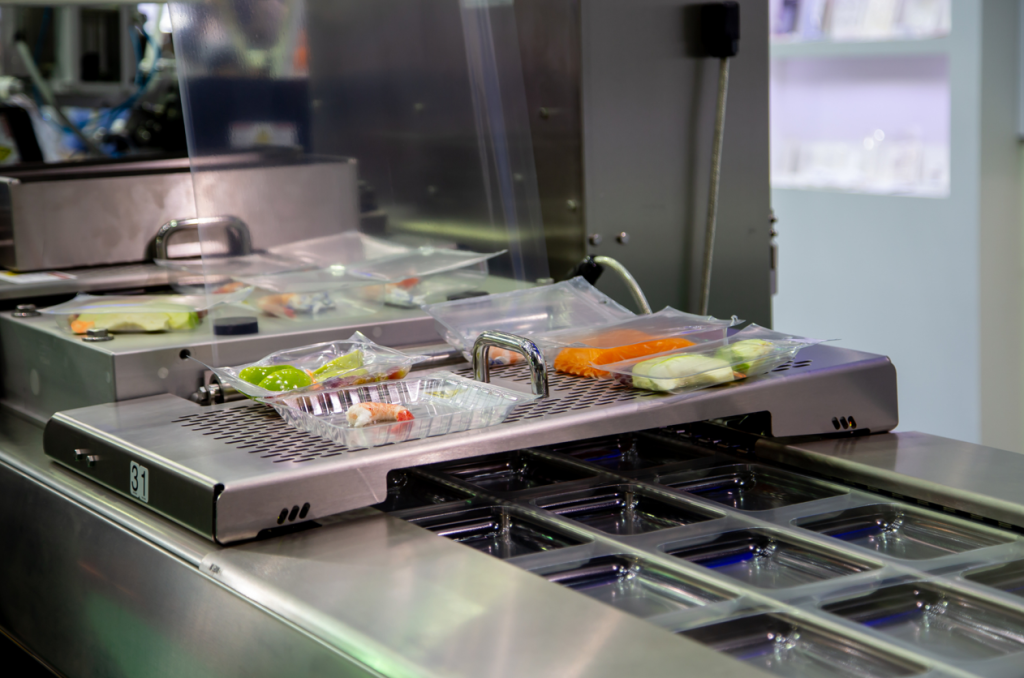
In today's fast-paced world, the demand for convenient and longer-lasting food products has increased significantly. To meet this demand, modern packaging technologies like Vacuum Packaging (VP) and Modified Atmosphere Packaging (MAP) have emerged as effective solutions for extending the shelf life of various food items. What about the benefits of these packaging methods, their safety considerations, and guidelines for maximizing the shelf life of vacuum and MAP packed products.
Understanding Vacuum Packaging:
Vacuum packaging involves removing the air from the packaging material surrounding the product. By eliminating oxygen, vacuum packaging helps to keep the product quality without detoriation. It prevents the growth of spoilage-causing microorganisms and slows down the oxidation process, thereby extending the product's shelf life.
Benefits of Vacuum Packaging:
Enhanced Shelf Life: The absence of oxygen inhibits the growth of aerobic bacteria and so improving the shelf life of the product. This is particularly beneficial for perishable items like meat, dairy, cheese, seafood, bakery, and poultry products.
Quality Preservation: Vacuum packaging helps retain the color, flavor, texture, and nutritional value of the food, ensuring that end users get the products at its fresh quality.
Understanding Modified Atmosphere Packaging (MAP):
Modified Atmosphere Packaging involves modifying the composition of the atmosphere surrounding the product by replacing the air with a carefully selected gas mixture. The gas composition is tailored to the specific product and aims to optimize its freshness and safety.
Benefits of MAP:
Microbial Growth Control: By adjusting the gas composition, MAP inhibits the growth of spoilage-causing bacteria and extends the product's shelf life while maintaining its sensory attributes.
Oxidation Prevention: MAP helps prevent oxidation reactions, which can lead to rancidity and quality deterioration in certain food items. By reducing the oxygen level, it helps preserve the product's appearance, taste, and nutritional value.
Safety Considerations:
While vacuum and MAP packaging provide significant benefits, it's crucial to prioritize food safety.
Here are some key considerations:
Good Manufacturing Practices (GMP): Adhering to GMP guidelines during the production process ensures proper hygiene, sanitation, and handling of the food products, protecting the product from contamination.
Packaging Material Selection: Choosing high-quality packaging materials that are suitable for vacuum and MAP applications is essential. Ensure that the materials comply with relevant food safety requirements and industry standards.
Seal Integrity: Maintaining proper seal integrity is critical to prevent air leakage into the package. Regularly inspecting and testing the seals helps ensure the package's integrity throughout its shelf life.
Guidelines for Maximizing Shelf Life:
To maximize the shelf life of vacuum and MAP packed products, consider the following guidelines:
Temperature Control: Proper temperature control during storage and transportation is one of the most important thing. Keep the products within recommended temperature ranges to prevent the growth of bacteria or spoilage.
Storage Conditions: Store vacuum and MAP packed products in clean, dry, and well-ventilated areas away from direct sunlight, too much heat, or moisture. Follow any specific storage requirements provided by the manufacturer.
FIFO Principle: Implement the "First-In, First-Out" principle to ensure that older products are consumed before the younger ones. This helps minimize the risk of expired or deteriorated items reaching consumers.
Consumer Education: Provide clear instructions to consumers on proper handling, storage, and usage of vacuum and MAP packed products. This empowers them to maintain product quality and safety when the package is opened.
Conclusion:
Vacuum and Modified Atmosphere Packaging are valuable tools for keeping the safety and quality of food products at its required level, particularly in industries like meat, dairy, cheese, seafood, bakery, and poultry. By understanding the benefits, safety considerations, and implementing proper guidelines, manufacturers and consumers can enjoy the extended shelf life and enhanced freshness these packaging methods offer. Remember, prioritizing food safety is crucial at every step of the process, from production to reaching end user.
For any further information for thermoform packaging machine solutions, please feel free to reach out to us at CEHUMA. We are committed to delivering high-quality, fully automatic thermoform vacuum, and MAP packaging machines tailored to your needs.